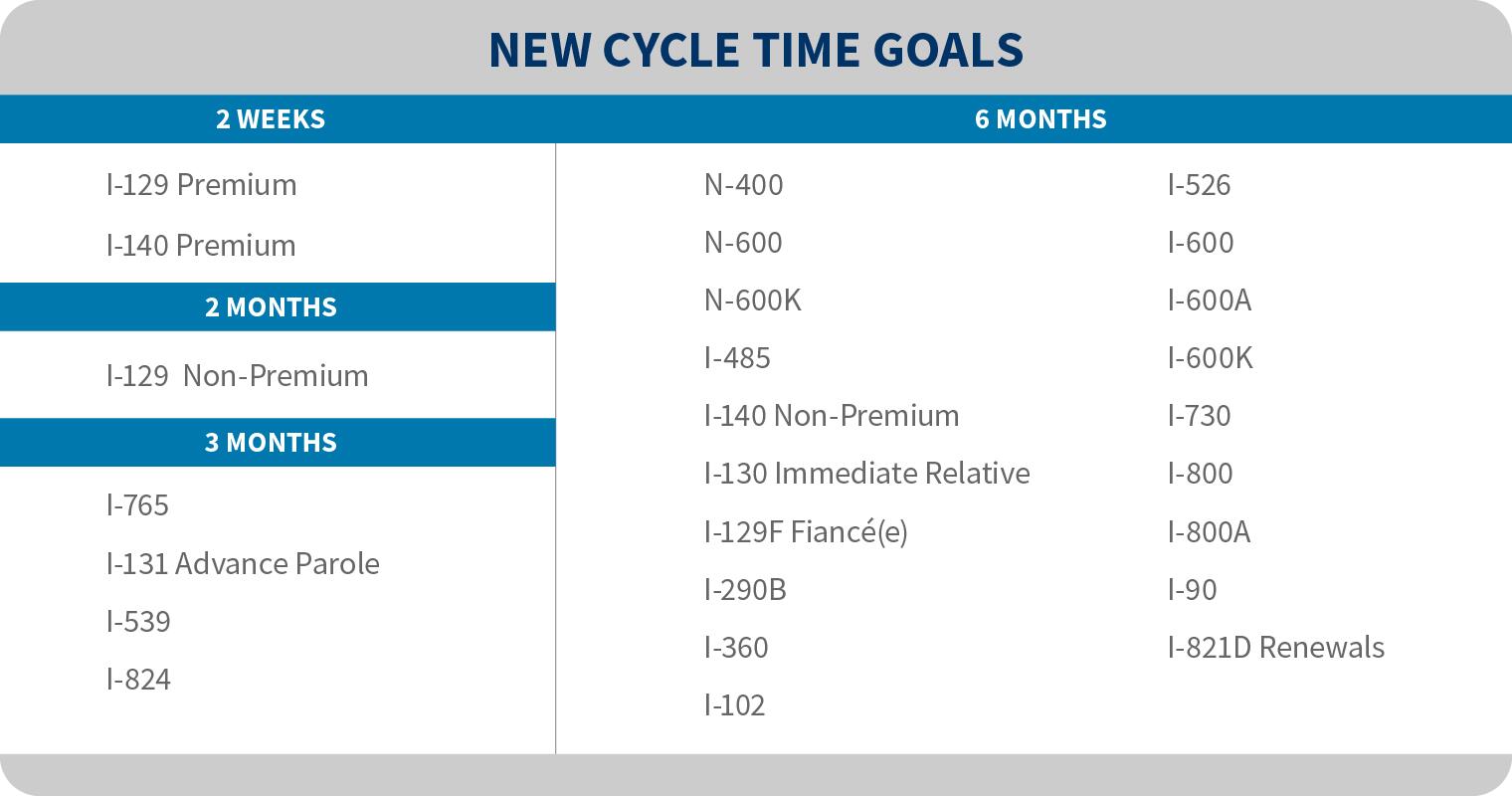On Tuesday, March 29, 2022, USCIS announced an action plan aimed to increase efficiency and reduce burdens to the legal immigration system. USCIS indicated three main goals within this new plan, including:
-
Set new agency-wide backlog reduction goals;
-
Expand premium processing to additional form types; and
-
Work to improve timely access to employment authorization documents (EADs).
Due to the COVID-19 pandemic and resource constraints resulting from the prior administration, USCIS inherited a significant number of pending cases and increased processing times. Through today’s actions by the Biden administration, USCIS plans to reduce these caseloads and processing times, while also ensuring that fair and efficient services are available to applicants and petitioners.
Reducing Processing Backlogs
In order to reduce the pending caseload, USCIS is establishing this month new internal time cycle goals. These goals are internal metrics that will guide the backlog reduction efforts of the USCIS workforce and affect how long it takes the agency to process cases. USCIS states that as cycle times improve, processing times will follow, and applicants and petitioners will receive decisions on their cases more quickly. In addition, USCIS plans to increase capacity, improve technology, and expand staffing to achieve these new goals by the end of FY 2023. USCIS’s publicly posted processing times show the average amount of time it takes to process a particular petition from inception to completion. Internally, USCIS monitors the number of pending cases in the agency’s workload through a metric called “cycle times.” A cycle time measures how many months’ worth of pending cases for a particular form are awaiting a decision. As an internal management metric, cycle times are generally comparable to the agency’s publicly posted median processing times. Cycle times are what the operational divisions of USCIS use to gauge how much progress the agency is, or is not, making on reducing our backlog and overall case processing times. Below are USCIS’s new cycle time goals:

Petitioners and beneficiaries alike will certainly applaud USCIS efforts to reduce processing backlogs.
Expanding Premium Processing
The Department of Homeland Security (DHS) announced a final rule that aligns premium processing regulations with the Emergency Stopgap USCIS Stabilization Act. The rule codifies premium processing fees and adjudication timeframes provided by Congress. Premium processing is an expedited adjudication service now available only to petitioners filing a Form I-129, Petition for a Nonimmigrant Worker, and to certain employment-based immigrant visa petitioners filing a Form I-140 Immigrant Petition for Alien Workers. This final rule expands the categories of forms ultimately eligible for premium processing services, including Form I-539 Application to Extend/Change Nonimmigrant Status, Form I-765 Application for Employment Authorization, and additional classifications under Form I-140.
USCIS intends to begin implementing, through a phased approach, premium processing availability of Form I-539, Form I-765, and Form I-140 in FY 2022. USCIS will also adhere to the congressional requirement that the expansion of premium processing must not cause an increase in processing times for regular immigration benefit requests. USCIS plans to begin this phased implementation process by expanding premium processing eligibility to Form I-140 filers requesting EB-1 immigrant classification as a multinational executive or manager, or EB-2 immigrant classification as a member of professions with advanced degrees or exceptional ability seeking a national interest waiver.
Expansion of premium processing would be a most welcome development. We hope this expansion of premium processing can happen sooner rather than later.
Improving Access to Employment Authorization Documents
USCIS continues to make progress toward a temporary final rule currently named “Temporary Increase of the Automatic Extension Period of Employment Authorization and Documentation for Certain Renewal Applicants.” In recent months, USCIS started streamlining many EAD processes, including extending validity periods for certain EADs and providing expedited work authorization renewals for health care and child care workers. The temporary final rule aims to build on this progress and to ensure certain individuals will not lose their work authorization status while their applications are pending.
We will continue to monitor any administrative changes as they are published by USCIS and DHS.